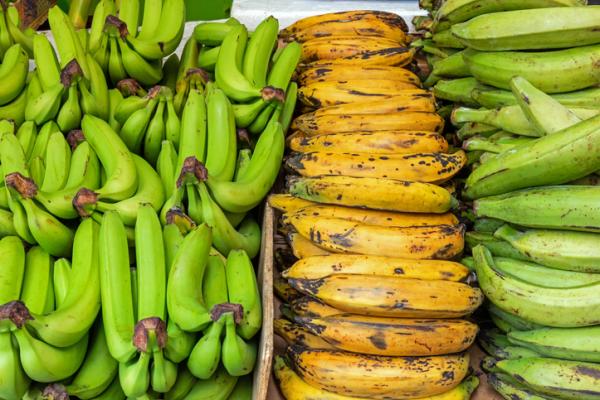
Types of bananas and their properties
Bananas, also sometimes called bananas, bananas, ripe or bananas, are among the most consumed fruits in the world. It is a fruit produced by many species, hybrids, and cultivars of the genus Musa. It is so vital that only wheat, rice and corn exceed the production of bananas and bananas worldwide at an economic and food level. If you want to learn more about the different types of bananas, join us in this article.
Types of bananas – list of names
These are some of the most popular and produced types of bananas:
Gros Michel
Cavendish
Dwarf or Dominican banana
Plantain or banana
Red banana
Tabasco banana and others
Gros Michel
The history of the Gros Michel banana is that of the disappearance of an entire variety of banana due to monoculture disasters. At the beginning of the 20th century, this fruit’s consumption spread and popularized to a great level in Europe and North America, which caused a large number of countries in Latin America to start growing bananas on large farms.
In 1940, a fungus named Fusarium oxysporum arrived in Panama, attacking the roots of plants. As some of you may already know, modern bananas do not have seeds, which means that the plant does not reproduce sexually and that, therefore, its genetic variety is shallow. This makes it especially vulnerable to certain threats, such as this one.
Twenty years after its arrival, the fungus proved lethal and had wiped out Gros Michel farms across America. It was a variety of small size and great flavor, more intense than those currently marketed.
Cavendish
After the Gros Michel disaster, they found a variety of resistant to the fungus. Its flavor was less intense. It was a larger fruit and less easy to handle at an industrial level: the Cavendish banana, which ended up being imposed due to its resistance to Fusarium oxysporum. Currently, there are different cultivars or types of Cavendish banana, which are the most consumed in many countries. The best known are the Great Dwarf, the Little Dwarf, the Lacatán, the Valery, the Robusta and the Poyo.
Cavendish bananas can be eaten raw as a dessert or aperitif, without the need to be cooked, and they account for a fairly high percentage of world fruit production. They are yellow when mature, with characteristic brown or black spots.
A variant of Fusarium oxysporum has recently been discovered that attacks Cavendish bananas. In the absence of effective control methods, this variety may share the fate of Gros Michel.
Most types of Canarian bananas belong to this group, specifically four of its five types: Lacatán, Poyo, Great dwarf and Little dwarf. The fifth variety is the Gros Michel that has been managed to continue growing, although in small numbers.
Dominican or dwarf banana
This is the smallest of the types of bananas in Mexico. It is a very sweet variety despite its small size, so it is widely used in pastry, confectionery, and sweet drinks preparation.
It is very rich in B vitamins, as well as vitamins C and E, as well as having a high magnesium content.
Plantain
The male plantain is usually called banana, although this word is simply used as a synonym for plantain depending on the region. The male banana is one of great size and weight. Its skin is thick and its pulp is of great consistency, in addition to offering a peculiar and less sweet flavor. It is one of the varieties of bananas that must be cooked for consumption. It is mainly used in its different stages of the ripening process, both green, yellow or black, depending on the dish or product to be made.
Nutritionally, it offers a high content of potassium and vitamin A and fiber, manganese, and vitamin B6. In general, in Europe, it is pretty unknown, but in many tropical countries, its consumption is widespread.
Red banana
It was already prevalent in America, but recently this variety of bananas has spread across the European continent. Although the most striking thing about it for the less accustomed is undoubtedly the red or reddish-brown color that gives it its name, it is a thick-skinned banana. Nor is its taste left behind, which has raspberry nuances.
The red banana is a fruit suitable for consumption, both raw and cooked, and the WHO recommends it since, despite being rich in calories, it is also rich in minerals and other nutrients, in addition to offering a shallow content in fats.
Other types of bananas
We also find other varieties of banana, such as the Tabasco banana or Roatán banana, which gets its name from Mexico’s state that produces it: Tabasco. It is a banana about 15 cm long, with yellow skin and without spots when ripe, with a mild flavor. Other names for varieties of bananas are:
- Mysore
- Bluggoe
- Orinoco
- Rhino horn



